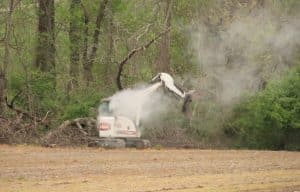Wheat yield record for Illinois
By PHYLLIS COULTER
FarmWeek
Illinois wheat growers broke yield records for the third year in a row.
Farmers not only broke the record in 2023, they “smashed it,” according to Mark Schleusener.
Usually when a record is broken, it is by one to two bushels per acre. Last year it was by eight, said Schleusener, Illinois state statistician for USDA’s National Agricultural Statistics Service.
The new state average wheat yield estimate for 2023 is 87 bushels per acre, up from 79 in 2022.
“We kind of smashed the record,” he said.
Illinois wheat farmers also broke county high yield records. It is the first time a county averaged more than 100 bushels per acre, he said. Again, the year’s results blasted past that with five counties surpassing that mark.
Tazewell County took top honors with the highest average yield in the state at 108.5 bushels per acre.
Stephenson, Knox, Jo Daviess and Gallatin counties all also topped the impressive 100-bushel-county-average.
While noteworthy, the high yields weren’t a complete surprise. An Illinois wheat tour projected high yields, as did NASS.
In both May and June, the forecasts were 78 bushels. In both July and August in more mature crops, estimates leaped to 84 bushels per acre and stayed there. The new number of 87 bushels also comes from a larger sample size, Schleusener said.
Washington County, which has the most wheat acreage in Illinois, had the highest production last year coming in at more than 6.4 million bushels.
Randolph County came in second in total production, just shy of 3.4 million bushels, and Perry County came in third with almost 3 million bushels.
Earlier in the year, some people scoffed at the high yields projected by the Illinois Wheat Association after its annual wheat tour in May.
Tour participants projected an average of 97.1 bushels per acre based on 57 samples from 20 counties, mostly south of Interstate 70. The projections were far above anything ever seen in this part of Illinois.
During the tour, IWA used a new method to enhance crop scouting with more focus on spikelet measurements and tiller counts to make yield projections. The results, using the new technique, were greeted with some skepticism because they were so much higher than in the past.
“Everybody kind of laughed at us,” said Mark Krausz, IWA president. But no one is laughing now. “I think we were pretty accurate.”
Projections in previous years had been considerably lower than the actual final yields, so the IWA sought the help of the University of Illinois for some tweaks in its forecasting to be more accurate.
The new system including spikelet and tiller information proved much more precise, especially taking into consideration the dry weather that followed the wheat tour. The lack of rain brought yields down a little from the earlier potential tour members saw in May, Krausz said.
“Not everybody had exceptional wheat, some wheat was just good,” said the Clinton County farmer of areas that didn’t receive timely rains during the year.
As for the 2024 wheat crop, Krausz said it’s looking good so far. Like last year, milder temperatures helped the winter wheat get off to a good start.
This story was distributed through a cooperative project between Illinois Farm Bureau and Illinois Press Association. For more food and farming news, visit FarmWeekNow.com.






